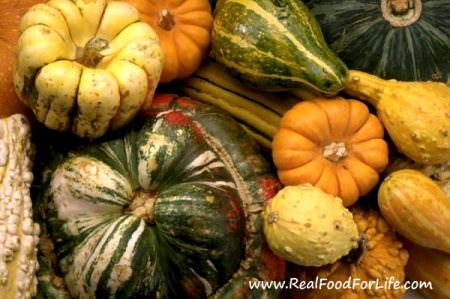Squash is a member of one of the oldest vegetable families in the world. It is a very versatile vegetable that can be used in soups, stews, purees, desserts and pies. There are also many kinds which are just decorative.

There are 2 Categories of Squash:
Summer Squash, which has bush vines, and tender skin and is eaten when small and immature.
Winter Squash which are hard skinned and good for storage. Summer squash is a tasty offering savoured by people from around the world. Its nutty flavour and moist texture enrich a vast array of dishes, ranging from dumplings to salads.
Summer squash
Summer squash has an abundance of manganese and vitamin C, and also magnesium, vitamin A, fibre, potassium, folate, copper, riboflavin, and phosphorus. It also has omega-3 fatty acids, vitamin B1, vitamin B2, vitamin B6, calcium, zinc, niacin, and protein. So you see it is a very healthy food.
 Zucchini: still dominates as the best known summer squash. It has thin skin that is usually green but can be yellow or striped or speckled. Being tender it cooks fast and it has edible flowers are often used cooking.
Zucchini: still dominates as the best known summer squash. It has thin skin that is usually green but can be yellow or striped or speckled. Being tender it cooks fast and it has edible flowers are often used cooking.
Other Summer squashes are:
Crookneck and Straightneck Squash: usually have a yellow skin and sometimes a green skin. Crookneck squash is partially straight with a swan-like neck. It was genetically altered to produce its straightneck cousin that is shaped as its name implies.
Pattypan Squash: a small saucer shaped squash with skin of either pale green or golden yellow. Its flesh is more dense and a little sweeter than the zucchini.
Winter Squash
Winter squash has a high amount of Vitamin A (beta-carotene), with vitamin C, potassium, dietary fiber and manganese. It also has folate, omega-3 fatty acids, vitamin B1, copper, vitamin B6, niacin-vitamin B3 and pantothenic acid.
Butternut squash: Tan colour with small seed cavity. This squash stores well and has a good flavour. Fairly dense golden flesh, makes an excellent puree.
 Pumpkin: Good in sweet and savoury recipes. Acorn squash: A deep black-green colour with a rich orange thick flesh – Delicious! Good for baking in the skin.
Pumpkin: Good in sweet and savoury recipes. Acorn squash: A deep black-green colour with a rich orange thick flesh – Delicious! Good for baking in the skin.
Doody or white pumpkin: Has pale greenish-white flesh and a delicate flavour.
Buttercup: Dark green colour with a deep orange flesh. This extra dry squash has a sweet flavour.
Delicatta: A creamy colour with green stripes. This squash is like a Sweet potato squash.
Spaghetti: Creamy colour with an oblong shape. The Flesh resembles spaghetti when cooked. Top with your favourite sauce!
Small Wonder: Light orange colour vegetable spaghetti looks like a softball in shape. It has more flavour than spaghetti squash. Great with salt, pepper, and butter.
White Acorn: A creamy white on the outside, pale yellow on the inside. It has a delicate nutty flavour.
Kabocha: A pumpkin shaped winter squash. It has a rich, sweet flavour and when cooked its texture resembles that of a tender potato. Kabocha squash weighs an average of three pounds and has spotted or blotchy dark green skin. It can be baked, steamed, stuffed or pureed. Works well as a substitution in recipes that call for pumpkin or sweet potatoes. Kabocha is generally available all year round. (this is obviously my favourite!)
When selecting a winter squash, do not select those that are soft or show pitting. Also, check that the stem is intact and looks fresh. Store up 1 – 3 months in a cool dry location that has good air circulation.
Here are a few squash recipes:
Feel free to share this information with others.Twitter and other links below.
Copyright © Diana Herrington You are welcome to share this article with anyone who you think may benefit from this information as long as you give credit to Real Food for Life by including the link to the home page www.RealFoodforLife.com or the direct link to this post.

